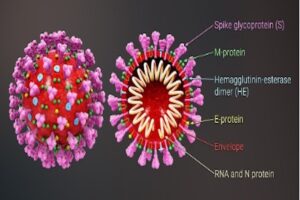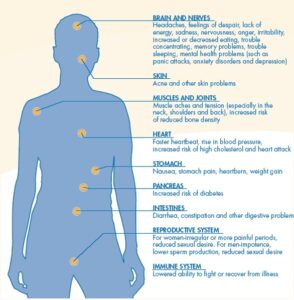
Source: Laboratoires Servier, (CC BY-SA 3.0)
Sleep is a fundamental and universal aspect of life, intricately woven into the tapestry of our daily routines, health, and well-being. Every night, as we drift into slumber, a symphony of neural activities begins, ensuring restorative rest and cognitive rejuvenation1. At the helm of many of our cognitive functions, including decision-making and responding to diverse situations, is the prefrontal cortex (PFC)2. This critical brain region has long been celebrated for its role in higher-order thinking, planning, and even in our emotional responses. But could the PFC also play a pivotal role in regulating sleep? A recent study published by scientists at the Imperial College of London has begun to unravel the PFC’s potential involvement in sleep processes, suggesting that the PFC might do more than just help us decide and act – it might also guide us into the realm of dream3.
Historically, the intricate interplay between distinct brain regions and their collective role in sleep regulation has been a topic of fervent research. Prior studies have hinted at the potential involvement of the prefrontal cortex (PFC) in sleep dynamics, yet the exact mechanisms remained somewhat elusive4. Tossell et al. sought to bridge this knowledge gap by employing advanced methodologies to delineate the neural pathways and mechanisms at play. Utilizing a technique known as comprehensive activity tagging, researchers employed optogenetics to introduce light-sensitive proteins into the PFC neurons of mice. By activating these proteins with light and subsequently capturing the resultant fluorescent signals through imaging, they could visually represent and measure neural activity in real-time. It was through this method that they identified the heightened activity of the PFCSst-GABA cells following sleep deprivation. These cells project to the lateral preoptic (LPO) hypothalamus and the lateral hypothalamus (LH), critical areas associated with sleep modulation. Experimentally, stimulating the PFCSst-GABA terminals in the LPO hypothalamus triggered sleep-preparatory behaviors in mice, such as nesting. Moreover, activation of these terminals in the LH simulated recovery sleep conditions in mice, exemplified by longer, uninterrupted sleep sessions and heightened delta wave activity in EEG readings, similar to the deep rest often seen after sleep deprivation. These novel findings not only substantiate the crucial role of the PFC in governing sleep behaviors but also highlight its direct interaction with the hypothalamus in ensuring optimal sleep conditions.
The revelations from Tossell and the team offer an intriguing glance into the multifaceted role of the PFC in sleep regulation, hinting at new horizons in sleep research. By pinpointing the influence of PFCSst-GABA cells on sleep induction, therapeutic avenues such as targeted neurostimulation, novel drug developments, and behavioral strategies come into focus, offering promise for conditions like insomnia and other sleep-related disorders. Furthermore, this study hints at the broader implications of non-pharmacological interventions, such as targeted behavioral therapies, capitalizing on the neural pathways discovered. Companies and institutions worldwide may soon explore and harness this information to create innovative treatments. Ultimately, Tossell et al.’s findings underscore the profound connection between the prefrontal cortex and sleep behaviors, setting a promising trajectory for future advancements in sleep neuroscience.
References
- Klinzing, J. G., Niethard, N. & Born, J. Mechanisms of systems memory consolidation during sleep. Nature Neuroscience 22, 1598–1610 (2019).
- Friedman, N. P. & Robbins, T. W. The role of prefrontal cortex in cognitive control and executive function. Neuropsychopharmacology 47, 1–18 (2021).
- Tossell, K. et al. Somatostatin neurons in prefrontal cortex initiate sleep-preparatory behavior and sleep via the preoptic and lateral hypothalamus. Nature Neuroscience 1–15 (2023) doi:https://doi.org/10.1038/s41593-023-01430-4.
- Muzur, A., Pace-Schott, E. F. & Hobson, J. Allan. The prefrontal cortex in sleep. Trends in Cognitive Sciences 6, 475–481 (2002).
Related Posts
A Novel Mental Health Literacy Education Program for Pre-Teens
Figure: A typical elementary school classroom in Japan (Cassidy, 2005). Source:...
Read MoreThe COVID Brain
Cover Image: The Structure of the Coronavirus. (Source: Wikimedia Commons,...
Read MoreThe Effects of Friends and Family on Daily Stress
Figure 1: This figure shows several of the different effects...
Read MoreMind Missing Out? Fear of Missing Out and the Brain
Figure: A person scrolling through news articles on their smartphone....
Read MoreTrust: The Essence of Good Policy Implementation
Figure 1 President Tsai Ing-wen inspects the Central Epidemic Command...
Read MoreChildhood Unpopularity May Increase Risk of Cardiovascular Disease in Adulthood
Figure 1: Childhood experiences are widely considered to affect adult...
Read MoreLukas Abraham






